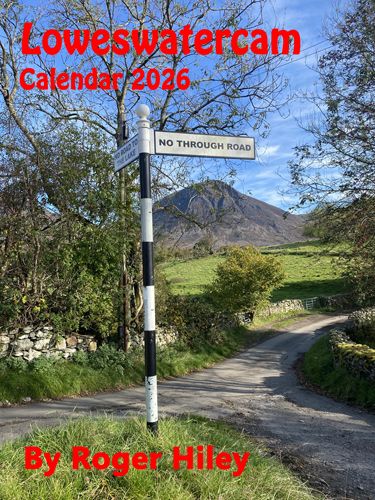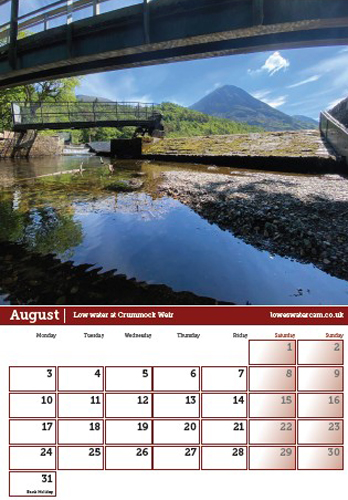|
|
||
Remember: Press F11 for a
full screen view of this page. |
Web Counter when published 2 249 900 |
|
" A National Trust Guided Walk - Whitehaven" Date & start time: Monday 15th September 2025, 10.00am start. Location of Start : Outside the Beacon Museum, Whitehaven, Cumbria, Uk. ( NX 969 182). Places visited : The Beacon, Wellington Pit, King Pit, Haig Pit and back. Walk details : Local walk 1.5 miles, 300ft - 90m of ascent, 2 hours including stops. Highest point : The local talk about the historic and environmental features of the area. Walked with : Twelve visitors, including myself, Dougal and our NT Guide, Chris Gommersall. Weather : Blustery , wet and windy showers, with the occasional appearance of the sun.
|
© Crown copyright. All rights reserved. Licence number PU 100034184. |
|
There was an invitation offered in The National Trust magazine recently, to visit some of their less well-known places and to hear of the history and details of their work. The grassland on the top of the cliffs at Whitheaven was one such place and we would learn how The Trust manages this important post-industrial heritage area. The email said . . . "Meet at ten at the Beacon, the walk will go ahead even in the event of bad weather" !
Health and Safety over (it's a steep drop, don't fall into the water) Chris began by introducing us to the harbour and it's importance over time. It started as a coal port by virtue of the immediately adjacent coal pits, the remnants of of which we would see today. It grew to become the second most important UK sea port due to its proximity to trade routes to Africa and America. Sadly, despite improvements to the harbour over the centuries, that title had to be relinquished to ports like Bristol and Glasgow where there was better access, deeper harbours and space to grow. In its day however, Whitheaven could harbour hundreds of sailing ships within its protective walls.
One noteable claim to fame is that Whitheaven was one of the last places in the UK to suffer a naval invasion when a fleet from the newly independent America attacked the port in 1778.
The leader of the unsuccessful invasion was John Paul Jones (1747 – 1792) a disillusioned Scotsman who would later come to be come to be known as "The Father of the American Navy". The artwork on the quay depicts him coming ashore and 'spiking the guns' so that they couldn't fire at his fleet of ships. Sadly for him, the weather was poor (like today) and his ammunition became wet and the pubs of the town were reputedly more attractive to his crews than the job in hand ! His crew failed to set fire to sufficient coal ships in the harbour to cause much damage but they did escape, as the defensive guns could not be fired at their fleet.
Also seen in the picture above, a new building on the harbour-side is called The Edge and is a new centre for Coastal Recreational Activities. Its designed is supposed to reflect the sea washed red sandstone of the area.
On the top of the hill above us was the site of the important Wellington Coal Pit which was in production for 92 years ( 1840 to 1932). The workings started by following a productive ten foot seam of coal and eventually extended out and down to other seams extending some four miles out under the sea. Coal from here was moved down to the quay side by a funicular railway and transported around the port for loading into ships.
The mine suffered a huge Methane explosion in 1910 and 147 men and boys died. This was to become Cumbria's worst mining disaster, but sadly only one of many in the county. [ More detail on the Wellington explosion and its aftermath can be found here ] This decorative chimney, with a design said to be based on one of the Lowther's candlesticks, served to both ventilate the mine and exhaust the fumes from the pit's working engines.
As we walked on, the rain shower passed and a faint rainbow was seen over the harbour.
The path continued up, to the site of an old gun, a legacy of that 1778 attack.
The plaque attached by the British Royal Engineers Salvage Team, after the gun had been retrieved from the sea off Tom Hurd's Rocks.
We learnt from Chris of the story of Tom Hurd who had rowed out with his lady to a local bay, only to be shipwrecked on their return as the weather changed. His true love drowned in the accident and Tom returned to the rocks in sorrow many times, only to be lost to the sea himself some time later, supposedly from those very same rocks. - - - o o o - - -
Onward and upward, Chris showed us to top of the railway incline that we had noted below.
The National Trust have a lease on the grasslands at the top of the hill and are trying to manage it so as to improve the environment and wildlife. We would learn of the change in cutting regime for the meadow and how the wildlife had improved as a result of their work. " The Colourful Coast " is the name given to this area . . . with the green being the land, red the sandstone rock, blue being the sea and black the coal deposits.
This whole area of flat meadow was in fact a huge coal tip, the result of several centuries of mining activity. The ground level is totally artificial, but a build up of top soil has allowed it to become a rare coastal moorland. The Trust is trying to manage the area by rotational cutting (rather than blanket mowing) to improve the flowers and animal life. The building in the background is the now-closed Haig Pit.
As a result of the subsequent erosion, the cliffs are steep A fatal accident just a few years back meant the area had to be fenced off and warning signs erected. [ The Trust encouraged them to place fences lower down the slope where possible, in order to protect the open aspect of the area.]
One problem nowadays is the occasional subsidence of parts of the headland where historically excessive water has been present. This area has slumped at one point in the past and has exposed the coal waste that overlays the original ground level.
Salton Pit in Whitheaven was the first undersea coal mine in England, operating from 1729 to 1848. Its ruins are a site of national archaeological importance, with features including a roofless engine house, a chimney, and a covered mine shaft.
Access is difficult and so not encouraged and soil erosion and gradual ground movement is also threatening the remains of the pit buildings. The site was conserved with the help of the National Trust and is now part of the Whitheaven Coast project.
Coal from the pit was hauled to the top of the cliff and transported by rail wagons along to the harbour inclines seen earlier. This area was also used by other industry later in its life but has been left in a derelict state since their closure. There were plans to tidy up the area, but a wildlife survey found it to be an important area for reptiles, including an important local population of slow worms.
Walking back towards the town we passed the old house on the cliff, thought to be one of the oldest buildings of the town. In its chequered life it has had many owners and is still occupied today. One famous resident was a certain Jonathon Swift, who went on to become famous as the author of the book "Gulliver's Travels". It was thought that the lofty view of the little people milling around the busy harbour below, might have inspired Swift to write about the 'tiny inhabitants of Lilliput'.
Close by the Haig Pit Candlestick chimney that we saw earlier is a Town Mosaic that was unveiled in 2010. It is set in the grounds of the Wellington Pit and the landscaping of the area emphasised the crenulated walls for which the pit was famous.
The top half of the mural shows life above ground and in the harbour, the lower section life below ground in the pits. - - - o o o - - -
On such a windy, blustery day I thought there may be more waves crashing over the outer protective piers of Whitheaven Harbour.
It seems that the wind, wave and low tide combination today has brought only smaller waves, but they still crash hard against the stone walls and raise significant spray.
As the walk draws to a close we find ourselves back above the Beacon Museum where we first started.
We say our thanks and our goodbyes to Chris after an interesting visit, both for the weather, for his history talk and the for local work of The Trust in the area. We parted company at the Wellington Tower, once part of the mine complex, then a coastguard office, now a base for the National Trust in the area. Many thanks again Chris for an interesting morning walk. - - - o o o - - -
Technical note: Pictures taken with my iPhone 11pro mobile phone camera. Resized in Photoshop, and built up on a Dreamweaver web builder. This site best viewed with . . . a descent set of waterproofs. Go to Home Page . . . © RmH . . . Email me here Previous walk - 13th September 2025 - Sheffield - Baslow Edge A previous time up here - 2nd July 2022 - Whitheaven & Harbour Fest Next walk - 21st September 2025 - Mob Mardale Ill Bell Walk
|

































